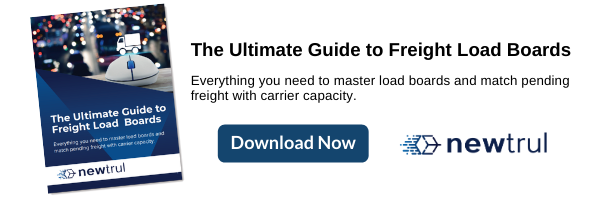There are only so many driving hours in a day. The faster you book a load, the quicker you can move on to the next. Load boards and private portals, although in many ways outdated, are still used by carriers, shippers, and brokers. Understanding the ins and outs of load boards, and the different types, is the focus of our new eBook The Ultimate Guide to Freight Load Boards.
Booking loads can be an expensive, time-consuming process involving many calls, emails, and website visits. Seasoned carriers develop relationships with brokers/shippers and often end up booking the bulk of their loads through those relationships, outside of load boards.
However, load boards are handy for finding backhauls and quickly connecting to available shipments in the marketplace–so it is good to know the ins and outs of how they work. They can, however, be deceptively complicated, leading many carriers to miss opportunities and have a poor experience. Our new guide encompasses everything you will need to know about load boards, their capabilities, and how best to use them to match real loads with carrier capacity.
Our guide outlines:
- How traditional load boards, private load boards, and freight marketplaces operate
- The pros and cons of the different booking options
- How to negotiate loads and what to avoid
- How automation and real-time updates are changing the game
Download the guide and learn more!
